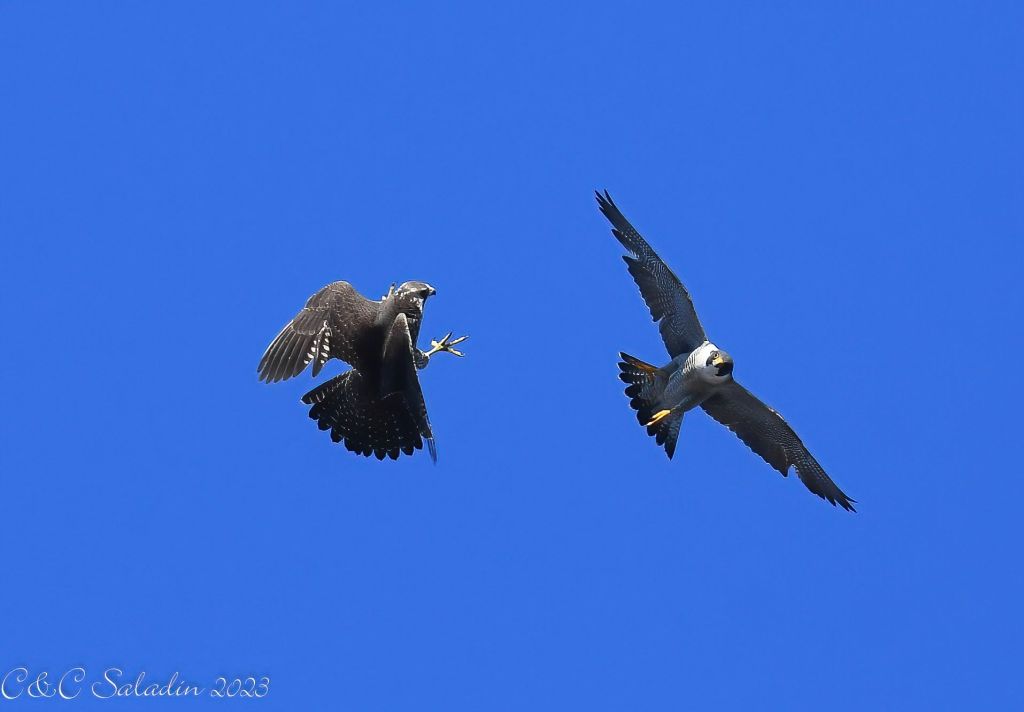
9 April 2023
After reporting on the peregrine drama last Wednesday in Downtown Pittsburgh I went there on Thursday 6 April to investigate. There were no peregrines at Gulf Tower but in just 15 minutes of watching at Third Avenue I saw two peregrines and a possible nest exchange. The departing bird was normal adult color (gray & white) and did a territorial flappy flight as it left. The arriving bird was very dark chocolate brown like the bird in Ann Hohn’s photo on 3 April.
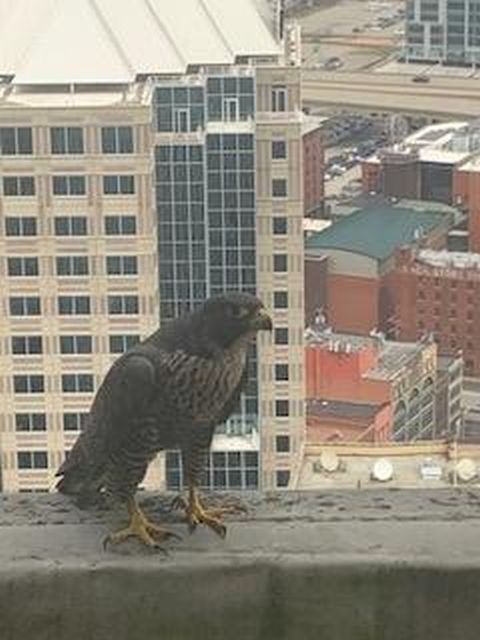
If this pair is on eggs, the arriving bird’s behavior did not match an incubating female. Instead of quietly moving to the nest the arriving bird called loudly for several minutes. It sounded like “Hey, come back!”
When I mentioned this on Pittsburgh Falconuts Facebook page, Jeff Cieslak remarked: “I’d say that’s pretty good news. But it does raise some questions, neither of the birds I saw on 3/3 were brown.” Here’s the peregrine pair Jeff photographed a month ago.
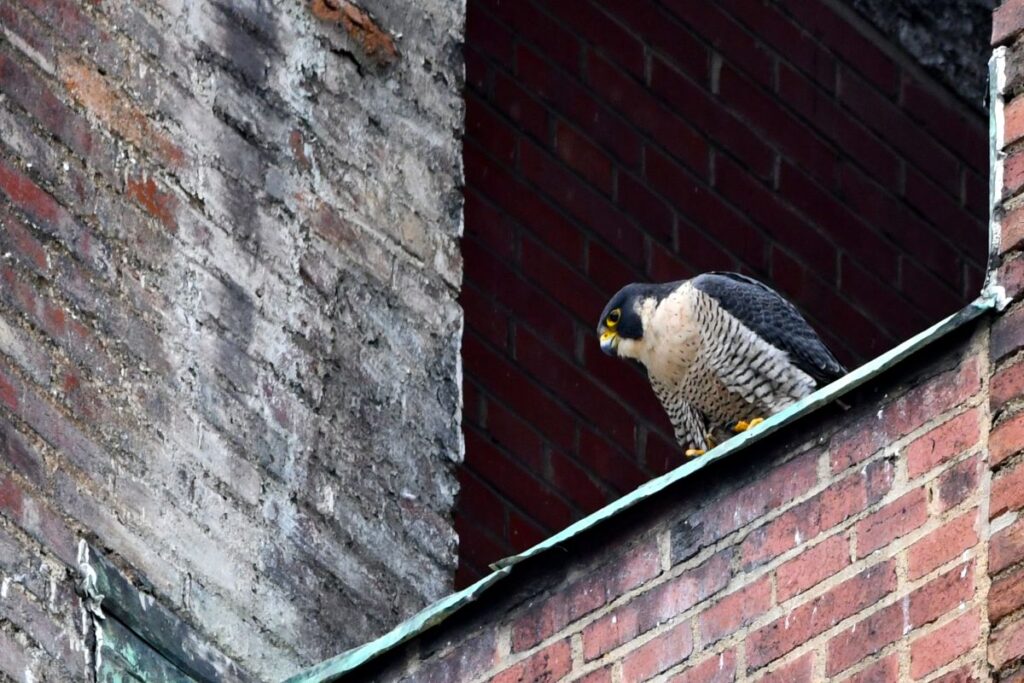
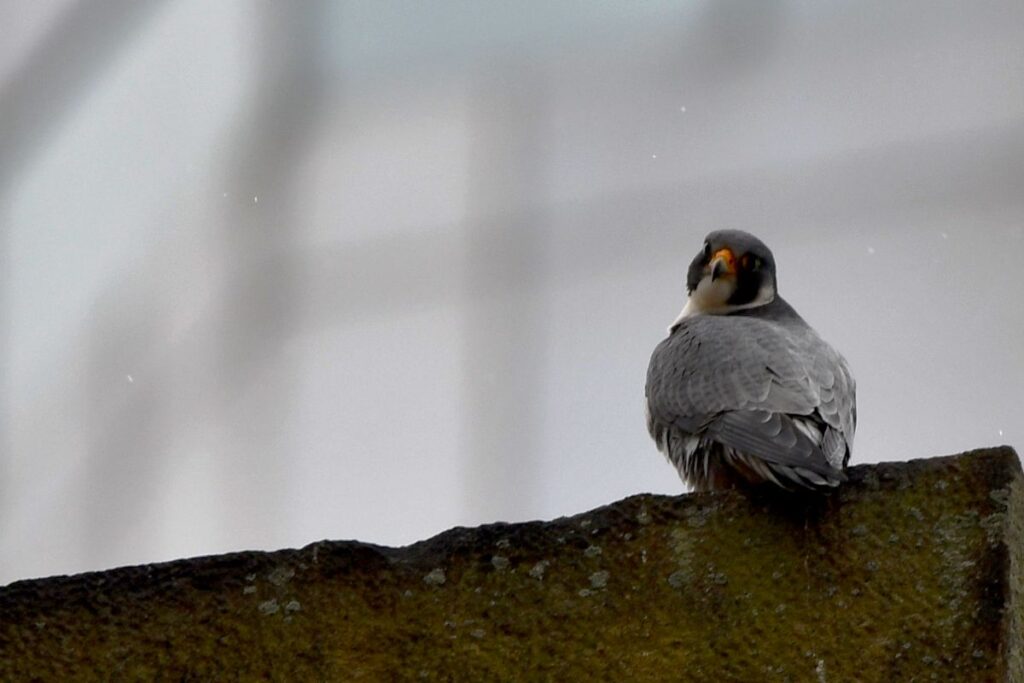
Correction as of early June 2023: The dark bird is not immature, just dark, and is the mother bird at Third Avenue. … The Theory below is based on incorrect information.
Aha! So the immature bird is an intruder. The quick exit of the adult bird Downtown is like Terzo’s reaction in 2016 when female intruders visited the Cathedral of Learning. Terzo always left quickly and the intruder female always remained at the nest. Adult females were silent but an immature female called loudly. (See this vintage article: Juvenile Female Intruder at Pitt on 8 April 2016.)
Why didn’t the Downtown adult peregrines attack? Peregrine falcon literature says that immature plumage protects young birds from attacks by territorial adults because they aren’t perceived as a threat. Young peregrines won’t breed until they have adult plumage at two years old(*).
… end of bad theory …
In this attack at CVNP/I-80, photographed by Chad+Chris Saladin, Chris explains that the adult male is not brutal to the one-year-old, partly because she’s female and partly because she’s immature.
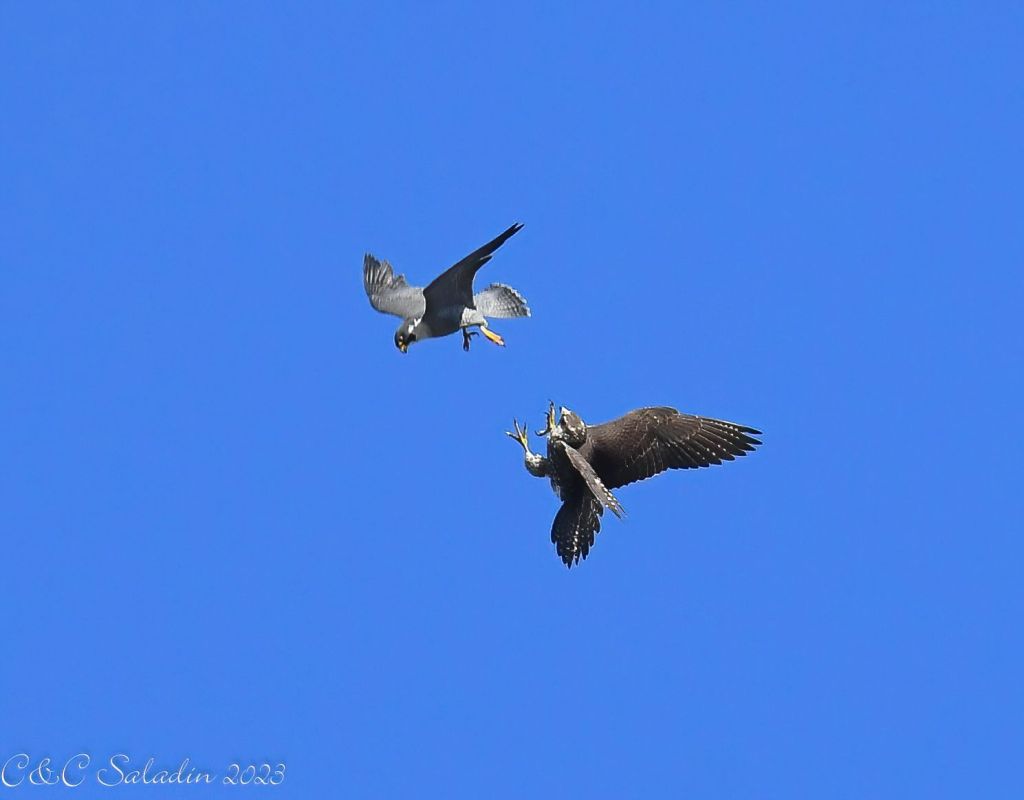
Yet these one year-old peregrines are disrupting nests. Are they trying to claim territory? Are they thinking about nesting?
Sara Showers reminded me of an article I wrote in 2020: “A year or two ago, it was pointed out to me that one of the factors that causes falcon populations to plateau at the “carrying capacity” isn’t just a finite food supply. When populations are very high, constant competition over nesting sites can cause those contested sites to not produce chicks in a given year – restricting population growth.”
Read about the Home Wrecker phenomenon in this 2020 article, written when Ecco was the young “intruder” and nesting failed that year.
(*) A note from Chris Saladin: “We’ve had 2 females successfully breed when they were just 1 year old, though it certainly isn’t common.”
(blue sky fight photos by Chad+Chris Saladin, adult peregrines at Third Ave by Jeff Cieslak, immature peregrine at Gulf Tower Ann Hohn)
It would be interesting to know what’s going on at Pitt. Right now, Ecco is at the scrape calling, and I can hear another Peregrine wailing in the background. It’s too bad if the Peregrines have gotten too successful and are preventing each other from breeding.
Someone finally answered Ecco and came to bow with him, but she was still wailing, rather than e-chupping. I’m assuming it is Morella but she’s not in the sun facing the camera, so I can’t see the peach coloring on her breast.
I checked the snapshots and so far she looks like Morela to me. Finger crossed.